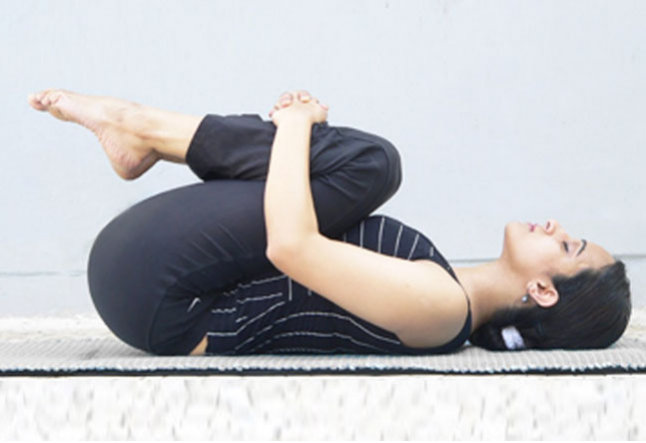the use of arterial compression in yoga

stopping the blood
While attending a Bikram Yoga class and performing the wind releasing pose ( pavanamuktasana ), the instructor encouraged the class to hug their knees and bring them as close to the shoulders as possible while compressing the thighs against the chest. He explained that we were trying to stop blood flow into the leg, known in Bikram Yoga as the tourniquet effect. Why would we want to do that? After all, isn’t yoga about increasing blood flow, warming the body with increased circulation and hyper-oxygenating our tissues? And by the way, what kind of wind are we trying to release here? Stopping the blood flow into the limbs is a yogic practice that dates back over 2,500 years. As practitioners of traditional Thai Massage, we routinely stop the blood flow into the limbs by compressing the major arteries that feed the legs and arms. Thai massage originated in northern India approximately 2,500 years ago, during the time of the enlightenment of Gautama Buddha. The practice of stopping the blood was first performed on monks who sat for hours on end in meditation. As you might have experienced, legs tend to “fall asleep” in meditation due to a lack of blood flow into the limbs. The physicians who tended to the Buddha and the surrounding Sangha developed a method to help restore and enhance blood flow to the legs of these marathon meditators. This technique called “stopping the blood” is still practiced today by practitioners of Thai massage and yogis and yoginis alike. During a Thai massage, a skilled practitioner will apply direct pressure with their palms or feet to the femoral artery, located in the groin, or to the axillary artery, located in the armpit, to slow the blood flow into the legs and arms respectively. The length of the compression varies, usually 15-45 seconds, and is only done on healthy individuals – never on anyone with heart disease, high blood pressure or varicose veins. In yoga, many poses offer some degree of compression of these vital arteries, which Bikram includes in his pavanamuktaasana series as well as shalabhasana (locust), a strong compressor of the axillary artery. The benefits of stopping the blood, whether done as part of a Thai massage or a yoga practice, are numerous. Stopping the blood is a misnomer; it is really the practice of slowing the blood flow through the limb’s primary artery and routing it to deeper, less frequently used arteries. By encouraging the body to build strength in secondary arteries, the body will build a stronger circulatory system. We can liken this to taking a back road when driving home on the freeway and meeting with heavy traffic. There are many ways to reach our final destination; we just have to learn alternate routes in case one is blocked. Can we strengthen an artery in this manner? Absolutely! Blood vessels contain muscles that help to pump and move the blood; their muscular layer is in the middle of the three layers that make up an artery known as the media layer. Another benefit to stopping the blood involves detoxification and removal of stagnant blood. Although arterial blood flow decreases during a blood stop, venous return continues unimpeded. The suction of venous blood back towards the heart increases in the vessels of the limbs affected by the blood stop. Stagnant blood, which would ordinarily pool at the far ends of the limbs, is returned back into circulation. When the pressure on the artery is released, a rush of fresh oxygenated blood courses through the arteries, capillaries and veins, further removing stagnant blood and toxins that accumulate on the walls of the blood vessels. In the Thai language, stopping the blood is translated as “opening the wind.” The concept of wind here is likened to the vata dosha , which is responsible for the physical movement of the body. Stopping the blood and other aspects of Thai massage, such as assisted stretching, focus on releasing the wind in the body from where it has become stagnant. So the next time you’re kissing your knees, you can focus on your connection to an ancient tradition that is far more complex than expelling abdominal gas. natmedworks.com
Read next >> sitting pretty – how yoga can help us achieve a more positive body image